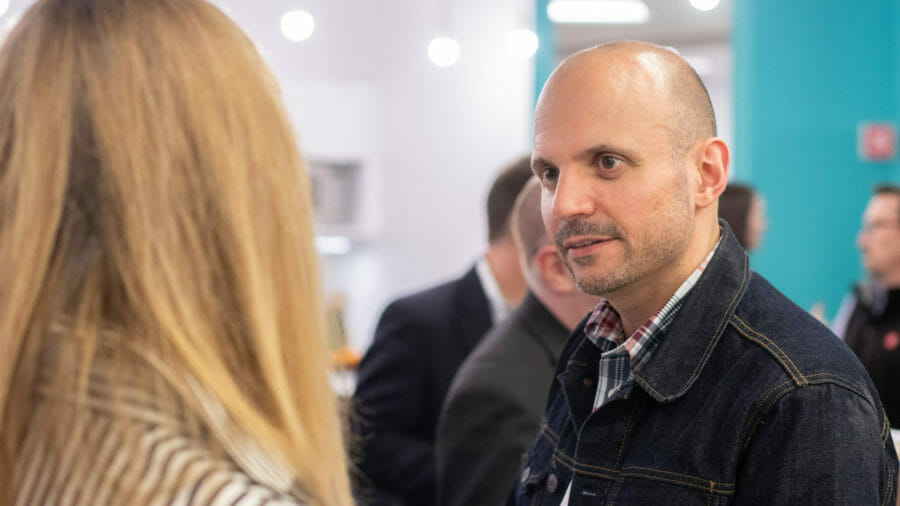Lin Grensing-Pophal, MA, SHRM-SCP is owner/CEO of Strategic Communications, LLC, and a marketing and communication strategist. Pophal is an accredited member of SHRM, IABC, and the American Marketing Association. She writes about topics like cultural fit, strategic HR skills, and strengths-based coaching for sites including Forbes and ADP.
HR professionals, recruiters, and hiring managers are faced with a vexing conundrum—finding candidates that are a good fit for their corporate culture and ensuring the creation of a diverse talent pool to harvest innovative ideas that can help them stay relevant and competitive.
The two are not, necessarily, mutually exclusive and yet it’s important to be alert to the potential for unintended bias when focusing on cultural fit.
How can hiring pros navigate this tricky terrain?
Cultural fit and inclusion: finding the middle ground
Fit matters. In a Harvard Business Review article, Katie Bouton wrote that poor cultural fit can result in turnover that can cost as much as 50-60 percent of an individual’s salary, according to SHRM. A good fit, on the other hand, can lead to greater job satisfaction and better performance.
“Companies should hire for both fit and for inclusion,” said Tara Stein, an employment lawyer and HR consultant in New York. Obviously, companies shouldn’t hire people who will not be a good fit with their organization. But, she added, “Companies can modify their hiring practices to ensure they evaluate a diverse pool of candidates.”
Join 10,000 companies solving the most complex people problems with PI.
Hire the right people, inspire their best work, design dream teams, and sustain engagement for the long haul.
Lisa Barrington, a certified HR consultant, coach, and workplace strategist, agrees. “Hiring for fit should be about hiring for aligned values, ethics, and business practices,” she said. “Hiring a diverse workforce is about personal style, an individual’s personal characteristics or personality.” Organizations should hire individuals whose personal values align with the company values.
There’s a slippery slope here, though. Too much of a good thing (fit) can lead to groupthink, a psychological phenomenon that, according to Psychology Today, “occurs when a group of well-intentioned people make irrational or non-optimal decisions that are spurred by the urge to conform or the discouragement of dissent.”
That tendency to agree to get along can hamper creativity and innovation, which is one of the reasons that diversity—not only of gender, race, or ethnicity but also of thought—is so important in the workplace.
The importance of a diverse workforce
“A diverse talent pool leads to better ideas and challenges people to think outside the box they are used to,” said Stein. Research backs her up.
Earlier this year, McKinsey & Company released Delivering through Diversity, a follow up to research done in 2015. The report stated: “The relationship between diversity and business performance persists.” The firm found that “The statistically significant correlation between a more diverse leadership team and financial outperformance demonstrated three years ago continues to hold true on an updated, enlarged, and global data set.”
The reverse is also true according to McKinsey’s research: ” … companies in the bottom quartile for both gender and ethnic/cultural diversity were 29 percent less likely to achieve above-average profitability.”
In an often-cited study of collective intelligence by a group of MIT researchers, the team, led by Thomas Malone, found that the highest performing groups shared three key traits:
- They gave each other relatively equal time to talk
- They were socially sensitive
- They included more gender diversity—in other words, more women
Research on the value that diversity brings to the table is widespread. In fact, it’s doubtful that many business people these days would say that diversity isn’t a good idea. And yet, lack of diversity proliferates in many organizations.
Battling unconscious bias
Unconscious bias and the natural tendency to be drawn to those who are “like us” can be contributing factors. Precisely because this bias is often unconscious, though, makes it challenging to overcome.
Stein recommended a number of things that organizations can do to minimize or remove unconscious bias from the hiring process:
Remove candidate names from resumes:
In the initial phase of hiring, identify one individual who will be responsible for removing the names of candidates from resumes, and another to evaluate the resumes. “Sometimes a name can make an individual assume that a person is of a certain race or ethnicity,” said Stein. “Further, removing the name removes the person’s gender out of the equation.” It’s interesting to note that a study by Harvard and Princeton found that doing this type of blind review increased the likelihood of hiring women by between 25 and 46 percent.
Rely on structured interview questions:
Give individuals involved in interviews specific questions designed to evaluate candidates’ potential for the job. “A company should not hire solely based on a ‘good feeling’ about someone,” said Stein.
Rely on a diverse set of recruiters:
Pull together a diverse group of recruiters to help provide a broader perspective.
And, of course, data—specifically predictive analytics—can help remove some of the inherent bias from the selection process.
By focusing on behavioral traits, tied to core competencies required for successful performance in a particular role, recruiters can aid hiring managers in making decisions that accommodate issues related to cultural fit while removing the propensity for bias.
There’s a logical balance to be struck between hiring for fit and hiring for inclusion, keeping in mind that diversity of thought, background, and experiences can bring richness to an organization that results in new ways of thinking. It’s that richness that leads to innovation, productivity and high performance—three things that all organizations strive for.


